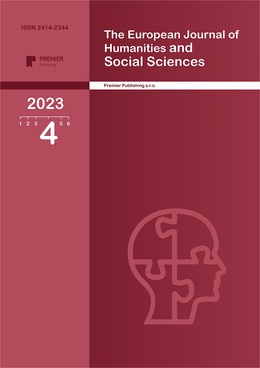Changes of the Image of Chinese People in Western Movies under the Speech Accommodation Theory
Authors
Wenjuan Lang, Meiyan Liu

Share
Annotation
As a carrier of culture and art, the movie inevitably becomes an important means of the cultural output of a country. Western movies especially American movies represent certain Western values and spread the Western language. The image of Chinese people is not uncommon in Western movies. However, with the rise of China, the change in China-Western relations, and the variation of the international situation, the portrayal of China in Western movies has also changed. This article selects six typical Western movies from the 1930s, 1980s, 1990s, and 21st century, Fu Manchu’s Mask, Charlie Chen -- the Black Camel, the last emperor, M. Butterfly, Mulan, and Crazy Rich Asians, which to a certain extent represent the attitude of mainstream American ideology towards China. This paper uses the Speech Accommodation Theory to analyze and research some lines about an image of Chinese people in Western movies and summarizes the manifestations, reasons, and coping strategies of image changes in Western movies.
Keywords
Authors
Wenjuan Lang, Meiyan Liu

Share
References:
- Coupland, N. & H. Giles. The Communicative contexts of Accommodation [J], Language and Communication, 1988, 8 (34):175-182.
- Giles, H. & P. Powesland. Accommodation Theory [C], in Coupland & Jaworski, Sociolinguistics, New York: Macmillan Press,1997:232-239.
- John Belton. American Cinema/ American Culture[M].Shanghai: Shanghai People's Publishing House,2009.
- Ruth Mayer, Serial Fu Manchu: the Chinese supervillain and the spread of Yellow Peril ideology [J]. Ireland: Asian Ethnicity, 2016, 17(1):161-166.
- Samuel Huntington. The Clash of Civilizations and the Remaking of World[M]. Beijing: Xinhua Publishing House,1997.
- Shane McCausland. The Flight of the Dragon: Modernism in China and Art at the Last Emperor’s Court-in-Exile [J]. London: Duke University Press, 2020, 70(1):51-83.
- Chang mei.Interpretation of Charlie Chen's Image [J].Movie Literature. 2017,(10)Meng Qiao, Tan Jing. Comment on the Chinese Image in Crazy Rich Asians from the Perspective of Western Centralism.[J].Media Forum.2021(16).
- Jia youjia. A Comparative Study of Cultural Empathy in Intercultural Communication——Taking the Movies M. Butterfly and The Treatment as Examples.[J].Journal of North University of China.2019(04).
- Liu chengguan. A Review of the Research on Speech Accommodation Theory[J].Applied Linguistics. 2001,(02): 57-64
- Wu Wei.Simulation, Ambiguity, and Hybridization: A Postcolonial Interpretation from
- Madama Butterfly to M. Butterfly.[J]. Foreign Literature.2004(04).
- Su jinying,Li jingwei.A Review of Speech Adaptation Theory and Identity Research[J].Foreign Language Education, 2010(06)


